Research Article 
 Creative Commons, CC-BY
Creative Commons, CC-BY
The Influence of Different Ways of Carrying a Load of a Schoolbag on Body Posture Features in the Frontal Plane at 7-Year-Old Students of Both Sexes
*Corresponding author:Mirosław Mrozkowiak, Physiotherapy Clinic AKTON, Warsaw, Poland.
Received: March 21, 2024; Published: March 26, 2024
DOI: 10.34297/AJBSR.2024.21.002906
Summary
Introduction: The persistent percentage of postural static disorders may have their source in the way the load of school supplies is transported. The aim of the research programme was to demonstrate, which of the analyzed methods of carrying a 4-kilogram school backpack would least disturb the statics of body posture in the frontal plane.
Material and Method: Body posture tests were carried out in a group of 65 students aged 7, using the projection moiré method in 4 positions: 1-habitual posture, 2-after 10 minutes of loading, 3-one minute after removing the load, 4-two minutes after removing the load.
Results: Correlations of differences in the values of frontal plane features in the habitual posture with the values after a 10-minute load with a 4-kilogram backpack and with the values after a 2-minute restitution were analyzed.
Conclusions:
a) Among boys and girls, carrying a 4-kilogram backpack on the back - chest and back disturbs the statics of body posture in the frontal plane the least, while carrying on the chest and the right hand drag causes the most disturbance.
b) Among boys, after a 2-minute restitution, posture disturbances in the frontal plane are the smallest after carrying a 4-kilogram backpack on the back - chest, among girls - obliquely on the right shoulder and left hip, and on the back - chest. The greatest disorders occur among boys and girls after carrying the schoolbag on chest and the right hand drag.
Keywords: Children’s health, Moire topography, Physical fitness, Postural asymmetry factor
Introduction
According to data published by the Central Statistical Office regarding the health status of the Polish population in 2004, a chronic spine disease is reported by 1.2% of children aged 0-14 [1]. In the years 2003-2005, the hospital morbidity rate of children aged 5-14 (compared to other age groups) in terms of distortive back diseases (M40-M43) and spine diseases (M45-M49) increased from 5.4 to 9.4 per 10,000 inhabitants [2]. Studies by Chansirinukor, et al. [3], Mayank, et al. [4] and Dahl, et al. [5] have shown that daily transport of a backpack and its loading significantly deepen the head and trunk flexion in the sagittal plane and scoliosis progression [6,7]. This, in turn, will require specialized treatment [8]. Grajda, et al. believe that bad habits related to carrying school backpacks and maintaining incorrect body position become the cause of posture defects and spine pain syndromes next to the congenital defects and post-accident injuries [9]. A literature review by Cottalord, et al. [10] shows that the incidence of Spinal Pain Syndromes (SPS) and back pain in children and adolescents is in the range of 80-84.1%. The authors question the relationship between the occurrence of SPS and the transport of school supplies. At the same time, they claim that carrying backpacks weighing from 30% to 40% of body weight is quite common among students. Research among 7-15-year-old students has shown that the weight of the backpack is not the problem, but the excessive physical effort of children while carrying it. The analysis of the survey results showed that 1/3 of children complain about back discomfort, and in the group with excessive backpack weight there are children with and without pain. The cited studies also show a relationship between excessive load on the spine and reduced lung capacity [11]. Given the mass of objects transported by children whose musculoskeletal systems are still developing [12] and undergoing rapid physical development [13], it is not surprising that this is associated with musculoskeletal injuries [14]. Excessive load on the growing spine, which responds to physical stress, is a predisposing factor to SPS in youth [13]. Other studies also suggest that carrying a heavy backpack is a risk factor for SPS in teenagers [15,16]. This is confirmed by the results of the study by Sheir-Neiss, et al. [17], who found that carrying backpacks with excessive weight was independently associated with SPS in adolescent school-age children. It is also important to consider that children carry backpacks almost every day for a period of approximately 12 years before their musculoskeletal system reaches full maturity. Moreover, as the percentage of obese school-age children increases [14], the overall demands for the child's body in carrying a backpack are greater than overweight children with sedentary lifestyle [1], which may result in skeletal development disorders.
The author's interest in the issue results from the persistently high percentage of static posture disorders in students of the oldest kindergarten group and grades I-III of primary school, the constantly proclaimed opinion on the negative impact of the method of carrying school supplies on the statics of body posture, and the lack of clear recommendations on the optimal and negative contraindications. The aim of the research programme was to demonstrate, which of the analyzed methods of carrying a 4-kilogram weight of a school backpack had the least negative impact on the values of selected features of body posture in the frontal plane.
Research Material
Children from randomly selected kindergartens in the West Pomeranian and Greater Poland Voivodeships participated in the research. Defects and body posture disorders were not an exclusion criterion from participation in the research programme. The division of respondents into those from rural and urban environments was abandoned since this feature will never constitute a homogeneous group and the cultural and economic boundaries of both environments are blurring. Qualification for the programme was made according to the scheme: if the respondent was 6 years, 6 months and 1 day old and under 7 years of age, he or she was classified as a 7-year-old. This allowed to use previously developed normative ranges appropriate for this age and gender category, diagnosing the quality of the body posture found on the day of the examination [18].
A total of 65 students participated in the programme, of which 53.84% (35 people) were girls and 46.15% boys (30 people).
Research Method
Before taking the measurements, children were trained to avoid stress related to the research procedure and the people carrying it out, (Picture 1). During the research, the kindergarten teacher's assistant of the studied group was always present to ensure the children's emotional stability. The measurements were carried out in accordance with the developed procedure, always using the same tools, in the same conditions and by the same people. The children were also encouraged to keep the anthropometric points marked on the skin with a marker, which was to effectively eliminate deviations in their repeated marking. The research was carried out by a physiotherapist with 20 years of experience in body posture diagnostics using the projection moiré method.
The method used, which uses the projection moiré phenomenon, determines the value of several dozen features describing body posture. It allows to determine the influence of different methods of transporting a container with school supplies on body posture and the restitution of the values of features after removing the load [18,19]. Any load on the body posture was ensured by the constructed (utility model protection right no. W.125734) diagnostic frame (Picture 2). The presence of an assistant during the examination was necessary to minimize the time passing from the load removal to the moment of the second registration of the values of postural features. Every effort has been made to ensure that the loaded frame is individually adapted to the child's body type. The assumed 10-minute loading time was the average time to commute from home, given in the questionnaire completed by parents [20]. The load was determined by averaging the weight of school supplies carried by first-grade students from a randomly selected primary school, which was 4kg. Selected body posture features were measured in 4 positions. First position - habitual posture, (Picture 3). Second position - posture after 10 minutes of loading (in the last 5 seconds), (Picture 4-12). Third position - posture one minute after removing the load. Fourth position - posture two minutes after removing the load, (Picture 3). The load was intended to imitate the way of carrying school supplies by draging the container with the left or right limb, on the left or right shoulder, diagonally on the left or right shoulder and at the hip, back, chest, back and chest. The subject could move freely. This is consistent with Mrozkowiak's previous research results, which show that after this time the values of body posture features may return to their initial values [21]. When diagnosing the habitual posture on the first day of the research programme, it could be assumed that it was appropriate and relatively constant for each student. However, to maintain the reliability of the research, it was assumed that any inconsistency with the feature values from the first edition of the measurements may affect the final research result. Therefore, before imposing the load prescribed by the procedure, the features of the habitual posture were always determined as a reference for dynamic changes in the diagnosed features. The children's body height and weight, as well as the weight of the transported school supplies, were measured using a medical balance before the first day of the study.
The measuring station for the selected values of the body posture features consists of a computer and a card, a programme, a monitor and a printer, a projection-receiving device with a camera for measuring selected parameters of the pelvis-spine syndrome. The place and the camera of a subject were oriented spatially in accordance with the camera's contours and in relation to the line of the child's toes. It is possible to obtain a spatial image with the lines projection on the child's back with strictly defined parameters, which catching on the body, are distorted depending on the configuration of its surface. The lens usage enables the image of the examined person to be taken by a special optical system with a camera, and then transferred to the computer monitor. Line image distortions recorded in the computer memory are processed by a numerical algorithm into a contour map of the tested surface. The obtained image of the back surface enables a multistranded interpretation of the body posture. Apart from the assessment of the torso asymmetry in the frontal plane, it is possible to determine the values of the angular and linear features describing the pelvis and physiological curvatures in the sagittal and transversal planes [18,22].
To minimize the risk of making mistakes in the measurements of selected posture features, the following test procedure was developed [18]:
a) Habitual posture of the subject against the background of a white slightly lighted sheet: free unforced posture, with feet slightly apart, knee and hip joints in extension, arms sagging along the body and eyes directed straight ahead, backwards to the camera at 2.5 meters with toes at a perpendicular line to the camera axis.
b) Marking points on the back skin of the examined: the tip of the spinous process of the last cervical vertebra (C7), the spinous process being the top of the thoracic kyphosis (KP), the spinous process being the top of the lumbar lordosis (LL), the transition from thoracic kyphosis to lumbar lordosis (PL), the lower angles of the shoulder (Łl and Łp), the posterior superior iliac spines (M1 and Mp), the S1 A white necklace was put around the subject's neck to clearly mark points B1 and B3. Long hair was bound to reveal the C7 point.
c) After registration of the necessary data about the examined (name and surname, year of birth, weight and body height, comments: about the condition of the knees and heels, chest, past injuries, surgical procedures, diseases of the musculoskeletal system, walk, etc.), the digital image of the back was recorded in the computer memory in each of the tested positions from the middle phase of free exhalation.
d) Processing of the recorded images takes place without the participation of the subject.
e) After saving the mathematical characteristics of the photos in the computer memory, the values of the body posture features that describe spatially the posture are printed (Figure 1).
Subject of Research
The photogrammetric method applied using the projection moiré phenomenon defines several dozen features describing the body posture. Sixteen angular and linear features of the spine were selected altogether with pelvis and torso in the frontal plane, as well as the body weight and height for statistical analysis. There was a need for the most reliable and spatially complete look at the child's body posture, which allowed for full identification of the measured discriminants (Table 1) (Figures 2,3) (Picture 13).
Research Questions and Hypotheses
The result of my own experience and analysis of the literature on the subject is the research question: which of the analyzed methods of carrying school supplies disturbs the body posture in the frontal plane the least and which the most during a two-minute restitution and a 10-minute transport? The results of our own research allow us to conclude that the features of body posture on the frontal plane are least disturbed when carrying two containers on the back - chest and a backpack on the back.
Statistical Methods
To achieve the aim of the research, which was to determine the method of transport that had the least and the most negative impact on body posture in the frontal plane, a meta-analysis was performed, in which the unit of analysis were the values of features describing body posture, and not the individual subjects. Two appropriately calculated variables were analyzed:
i. The change value during loading - the differences between the 1st and 2nd measurement were registered as a percentage of absolute values. For example, the average of 11.32 means that the value of body posture characteristics between the 1st and 2nd measurement changed on average by 11.32%. Therefore, the higher the average percentage, the greater the change in the effect of a given type of transport (immediately after its use), which can be interpreted as less desirable method of transportation.
ii. The change value after restitution - the differences between the 1st and 4th measurement were registered as a percentage in absolute values. For example, the average of 11.32 means that the value of body posture characteristics between the 1st and 4th measurement changed on average by 11.32%. Therefore, the higher the average percentage, the greater the change in the effect of a given type of transport after restitution (2 minutes after removing the load), which can be interpreted as a less expected way of transport.
It should be considered that the values of the variable in changes after restitution should be always smaller (optimally equal to 0) than the changes immediately after using a given means of transport. To compare the analyzed transport methods in terms of the values of changes during carrying and after restitution, the Kruskal-Wallis’s test was used, preceded by the Kolmogorov-Smirnov normality test.
The Kolmogorov-Smirnov test was used to determine whether the distributions of the analyzed variables measured at the ratio level were consistent with or deviated from the normal distribution, which is crucial for choosing appropriate tests in the main part of the statistical analysis. The following symbols are used in the tables: K-S - the statistics of the Kolmogorov-Smirnov test, N - the number of included cases, "p" - the significance of the Kolmogorov-Smirnov test. Two levels of statistical significance were adopted: p<0.01, marked with *, and p<0.05, marked with *. In each of these cases, the distribution of the analyzed variable differs significantly from the normal distribution. The Kruskal-Wallis’s test was used to determine whether more than two groups differed from each other in a statistically significant way, in terms of variables measured at the ordinal level or in terms of variables measured at the ratio level, but whose distribution statistically significantly deviated from the normal distribution. The following symbols are used in the tables: M - arithmetic mean, Me - median, SD - standard deviation, H - Kruskal-Wallis’s test statistics, p - significance of the Kruskal-Wallis’s test. Two levels of statistical significance were adopted: p<0.01, marked with **, and p<0.05, marked with *. In each of these three cases, the difference between at least two groups can be described as statistically significant. In the case of this test, it is also necessary to determine which groups are statistically significantly different from each other - if the test shows a significant difference at least at the p<0.05 level. For this purpose, a multiple comparison test was performed, and its results were presented with the abbreviation R.I. (Significant Differences), which groups are statistically significantly different from each other and what is the direction of this difference (< or >). Comparisons were made in the frontal plane separately among girls and boys.
Results Obtained
In total, the research carried out in a group of 65 people of both sexes allowed for the registration of 5395 values of features describing body posture in a habitual posture and dynamic positions, body weight and height, and physical fitness. The average body weight among girls was 24.46kg, body height was 123.87, and among boys, respectively: 24.56kg, 123cm. All children had a slender body type, according to the Rohrer weight and height index [23]. The information was also obtained through a survey of 65 parents of children put in for the research project [20].
Statistical analysis showed differences between the 1st and 2nd measurements in carrying by boys that the least changes in posture are caused by carrying two containers on the back-chest, and the greatest changes of the backpack on the chest. The Kruskal-Wallis’s test showed that the back-chest carrying causes significantly smaller changes than the left shoulder, left- or right-hand container pull, right shoulder and chest ways, and additionally the back-chest way causes statistically significantly smaller changes than the right shoulder, right-hand drag mode and chest carrying (Table 2, Figure 4). The smallest changes in posture during the restitution phase (differences between the 1st and 4th measurements) are caused by transport on the back-chest, and the largest by the right-hand drag mode. The Kruskal-Wallis’s test showed that transport on the back-chest induces significantly smaller changes than carrying on the chest and with the right mode, (Table 3, Figure 5).

Table 2: Comparison of two individual ways of carrying in respect of the value of differences between 1st and 2nd measurement among boys in the frontal plane n=30.
Source*: Own Research.

Figure 4: Comparison of differences between 1st and 2nd measurement of values of posture features in frontal plane in analysed ways of carrying at 7-year-old students of both sexes n=65.
Source*: Legend G-KL -carrying on the spine - chest G -carrying on the spine P.bark-L.biodro -diagonal carrying on the right shoulder-left hip L.bark-P.biodro -diagonal carrying on the left shoulder-right hip L.bark -carrying on the left shoulder or in the left hand Ciąg LR -left hand drag P.bark -carrying on the right shoulder or in the right hand Ciąg PR -right hand drag KL -carrying on the chest

Table 3: Comparison of two individual ways of carrying in respect of the value of differences between 1st and 4th measurement among boys in the frontal plane n=30.
Source*: Own Research.

Figure 5: Comparison of differences between 1st and 4th measurement of values of posture features in frontal plane in analysed ways of carrying at 7-year-old students of both sexes n=65..
Source*: Legend G-KL -carrying on the spine - chest G -carrying on the spine P.bark-L.biodro -diagonal carrying on the right shoulder-left hip L.bark-P.biodro -diagonal carrying on the left shoulder -right hip L.bark -carrying on the left shoulder or in the left hand Ciąg LR -left hand drag P.bark -carrying on the right shoulder or in the right hand Ciąg PR -right hand drag KL -carrying on the chest

Table 4: Comparison of two individual ways of carrying in respect of the value of differences between 1st and 2nd measurement among girls in the frontal plane n=35.
Source*: Own Research.

Table 5: Comparison of two individual ways of carrying in respect of the value of differences between 1st and 4th measurement among girls in the frontal plane n=35.
Source*: Own Research.
When considering the results of the statistical analysis of the girls, it was observed that the smallest changes in posture during carrying (differences between the 1st and 2nd measurements) of the backpack are caused by carrying the weight of school supplies in two containers on the back-chest, and the largest by carrying the backpack on the chest. The Kruskal-Wallis’s test showed that the back-chest mode causes statistically significantly less change than carrying on the right or left shoulder, in the left or right-hand drag mode and on the chest. In addition, carrying on the back causes statistically significantly smaller changes than on the left shoulder, in the left- or right-hand drag mode, and on the chest, (Table 4, Figure 4). The smallest differences in changes in the values of postural characteristics during the restitution phase (differences between the 1st and 4th measurements) are caused by obliquely carrying on the right shoulder-left hip, and the largest on the chest. The Kruskal-Wallis’s test showed that the right shoulder-left hip and back-chest modes of carrying cause statistically significantly smaller changes than right hand drag mode and chest carrying (Table 5, Figure 5).
Discussion
In Dobosh's study of the postural effects of backpack loading, a habitual unloaded posture was taken as the baseline. When the backpack was worn in the traditional manner at a load value of 5% of body weight, there was a backward displacement of the COP, which caused a strong compensatory response leading to its forward displacement. Although this is not clear from statistical calculations, this trend occurs in any situation where the backpack is on the back at any load value, hereby the higher the load the lower the compensation value. In the contrary, with the backpack on the front of the body, no postural response was observed to the forward displacement of the COP relatively to its position in the unloaded test, which in this case may indicate a child’s lack of or insufficient compensation, whereby the greater the value of the load, the further the COP was moved. This is only a trend that has not been confirmed statistically. It may be due to a sense of greater safety in forward leaning and awareness of the possibility of a fall amortisation with the upper limbs. The postural stability values when the backpack is put on in the traditional way with a load value of 10% of the body weight are statistically significantly lower than the values when tested with an identical load but with the backpack on the front side of the body. Such a relationship occurs at all load values during testing with the eyes open. There is a significant increase in postural stability values for tests with the eyes closed and with the backpack on the back and a load of 10% of the body weight and for tests with the backpack on the front side and a load of 15% of the body weight. Similar trend-like changes occur at each backpack position and load [24]. Mrozkowiak's research on the effects of carrying school supplies by 7-year-old students showed that transporting school supplies obliquely on the left or right shoulder and with a heteronymous hip can induce significant adaptive changes in the skeletal and muscular systems. The author believes that the longer the transport time, the greater the weight of the container and the intensity of the physical effort, these changes will be greater. The changes are not gender dependent. The analyzed way of carrying should not be practiced among 7-year-old children of both sexes [25]. In another study, Mrozkowiak showed that carrying a 4-kilogram weight of school supplies by the right or left hand drag mode just as significantly and negatively disturbs the biomechanical statics of a 7-year-old child's body, which can cause disturbances and, consequently, postural defects in the long term [26]. Hsu, et al. point out that children carrying backpacks on one shoulder must balance the weight of the bag by tilting their heads to the opposite side [27]. Moreover, this strategy creates high torque around the spine, which can cause scoliosis. A study by Brzęk et al. in a group of 7–9-year-old children showed that the weight of school bags after one school year significantly induced changes in the body posture, especially rotational parameters. Asymmetry in the length of the backpack straps was significantly more frequent, occurring in the group of girls, and differences between braces may have influenced some posturometric parameters [28].
An inversely proportional relationship between the length of the strap and the depth of the lumbar kyphosis and lordosis has also been shown [29,30], which, according to Mwaka, et al (2014), has a biomechanical explanation. Since, it is the result of the force moments distribution caused by the load on the schoolbag. A child trying to balance the weight of a backpack located too high on the back will lean forward and cause overloading of the spine [31, 32]. This adaptation will force abnormalities in anterior and posterior muscle fasciae [33].
Conclusions
a) Among boys and girls, carrying a 4-kg backpack on the back-chest and back disturbs postural statics in the frontal plane the least, whereas it is the most disturbed while carrying on the chest and in the right hand drag mode.
b) Among boys, after a 2-minute restitution, postural statics disturbances in the frontal plane are the smallest after carrying a 4-kilogram backpack on the back - chest, among girls obliquely on the right shoulder and at the left hip and on the back - chest. The greatest disturbances occur among boys and girls after dragging with the right hand and on the chest.
Acknowledgements
None.
Conflict of Interest
None.
References
- Health status of the Polish population in 2004 GUS 2006.
- National Institute of Hygiene. Scientific and Research Institute. Hospital morbidity - data 2003-2005.
- Chansirinukor W, Wilson D, Grimmer K, Dansie B (2001) Effects of backpacks on students: measurement of cervical and shoulder posture. Aust J Physiother 47(2): 110-116.
- Mayank M, Singh U, Quddus N (2006) Effect of backpack loading on cervical and shoulder posture in Indian school children. Indian J Physiother Occup Ther 1: 3-12.
- Dahl KD, Wang H, Popp JK, Dickin DC (2016) Load distribution and postural changes in young adults when wearing a traditional backpack versus the BackTpack. Gait Posture 45: 90-96.
- Orloff HA, Rapp CM (2004) The effects of load carriage on spinal curvature and posture. Spine 29(12):1325-1329.
- Chow DHK, Ting JML, Pope MH, Lai A (2009) Effects of backpack load placement on pulmonary capacities of normal schoolchildren during upright stance. Int J Ind Ergon 39: 703-707.
- Szurmik T, Bibrowicz K, Lipowicz A, Mitas AW (2021) Methods of Therapy of Scoliosis and Technical Functionalities of DISC4SPINE (D4S) Diagnostic and Therapeutic System. [In]: Pietka E, Badura P, Kawa J, Wieclawek W (eds) Information Technology in Biomedicine. Advances in Intelligent Systems and Computing, vol 1186. Springer, Cham. pp. 201.
- Grajda A, Kułaga Z (2007) Excessive load on students' spines with school bags. Occupational Safety: 9.
- Cottalorda J, Bourelle S, Gautheron V (2004) Effects of Backpack Carrying in Children. Orthopedics: 1172-1177.
- http://www.med.umich.edu/opm/newspage/2003/ backpack.htm, 15.05.20 r. godz.11.10.
- Bauer DH, Freivalds A (2009) Backpack load limit recommendation for middle school students based on physiological and psychophysical measurements. Work 32(3): 339-350.
- Kujala UM, Salminen JJ, Taimela S, Oksanen A, Jaakkola L (1992) Subject characteristics and low back pain in young athletes and nonathletes. Med Sci Sports Exerc 24(6): 627-632.
- Pau M, Mandaresu S, Leban B, Nussbaum MA (2015) Short-term effects of backpack carriage on plantar pressure and gait in schoolchildren. J Electromyogr Kinesiol 25(2): 406-412.
- Goodgold S, Corcoran M, Gamache D, Gillis J, Guerin J, et al. (2002) Backpack use in children. Pediatr Phys Ther 14(3): 122-131.
- Negrini S, Carabalona R, Sibilla P (1999) Backpack as a daily load for schoolchildren. Lancet 354 (9194): 1974.
- Sheir Neiss GI, Kruse RW, Rahman T, Jacobson LP, Pelli JA (2003) The association of backpack use and back pain in adolescents. Spine 28(9): 922–930.
- Mrozkowiak M (2015) Modulation, influence and relationships of selected postural parameters of children and adolescents aged 4 to 18 years in the light of projection moiré, Kazimierz Wielki University Press, Bydgoszcz, vol. I, II.
- Mrozkowiak M (2021) Standardization of the diagnosis of body posture using photogrammetric methods MORA 4G HD, Fizjoterapia Polska 1(21): 2-40.
- Mrozkowiak M (2020) How do parents perceive the schoolbag problem? Pedagogy and Psychology of Sport 6(4): 151-162.
- Mrozkowiak M (2007) Biomechanical analysis of changes in selected parameters of the pelvic-spine complex in the frontal and transverse planes during and after loading. [In:] Education in a "risk" society. Safety as a value. Vol. 2. (Edn). of Sciences. Matylda Gwoździcka-Piotrowska, Andrzej Zduniak. Poznań: Higher School of Security Publishing House, pp. 339-342.
- Świerc A (2006) Computer diagnostics of body posture - user manual, CQ Elektronik System, Czernica Wrocławska: 3-4.
- Malinowski A, Wolański N (1988) Research Methods in Human Biology, Selection of Anthropological Methods, PWN, Warsaw, 23-26.
- Dobosz D, Sobota G (2011) Analysis of patterns of compensation of vertical body posture in children after loading with a school backpack. Current Problems of Biomechanics 15: 19-24.
- Mrozkowiak M (2020) The influence of backpack loads transported obliquely on the right or left shoulder and hip on postural features in the sagittal and transverse planes in 7-year-old pupils of both sexes, Nowa Pediatria 24(3): 39-53.
- Mrozkowiak M (2020) An attempt to determine the difference in the impact of loading with the mass of school supplies carried using the left- and right-hand thrust on body posture of 7-year-old pupils of both genders. Pedagogy and Psychology of Sport. 6(3): 44-71.
- Hsu WH, Lai LJ, Huang YP, Avichandra Singh (2019) Association analysis of scoliosis based on backpack carrying methods and head position of elementary school students. Biomed J Sci Chap Technical 13(5): 10222-10232.
- Brzęk A, Dworrak T, Strauss M, Sanchis Gomar F, Sabbah I (2017) The weight of pupils’ schoolbags in early school age and its influence on body posture. BMC Musculoskeletal Disorders 18(1): 117.
- Sedrez JA, da Rosa MIZ, Noll M, Medeiros FS, Candotti CT (2015) Risk factors associated with structural postural changes in the spinal column of children and adolescents. Rev Paul Pediatr 33(1): 72-81.
- Van Gent C, Dols J, De Rover C, Hira Sing R, De Vet H (2003) The weight of schoolbags and the occurrence of neck, shoulder, and back pain in young adolescents. Spine 28(9): 916-921.
- Mwaka ES, Munabi IG, Buwembo W, Kukkiriza J, Ochieng J (2014) Musculoskeletal pain and school bag use: a cross-sectional study among Ugandan pupils. BMC Res Notes 7: 222.
- Miñana Signes V, Monfort Pañego M (2016) Knowledge on health and back care education related to physical activity and exercise in adolescents. Eur Spine J 25(3): 755-759.
- Rai A, Agarawa S (2013) Back problems due to heavy backpacks in school children. IOSR J Hum Soc Sci 10: 1-5.



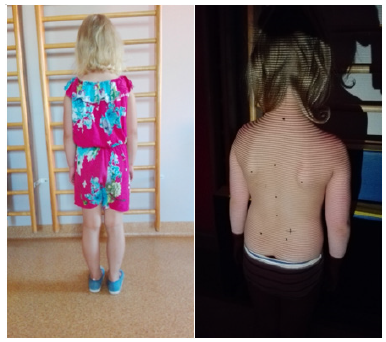
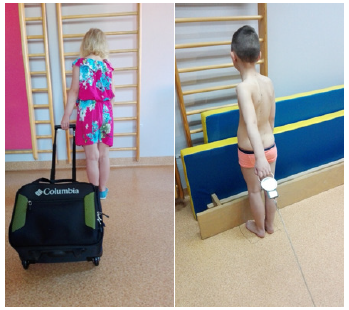
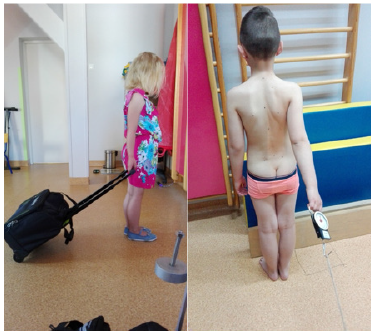



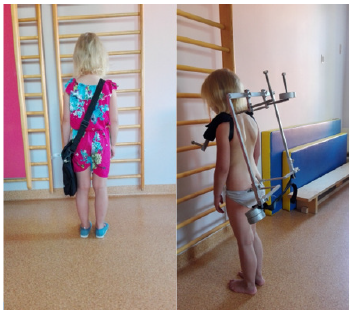
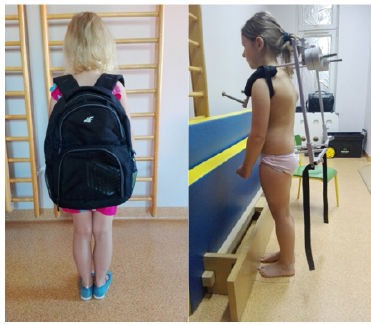


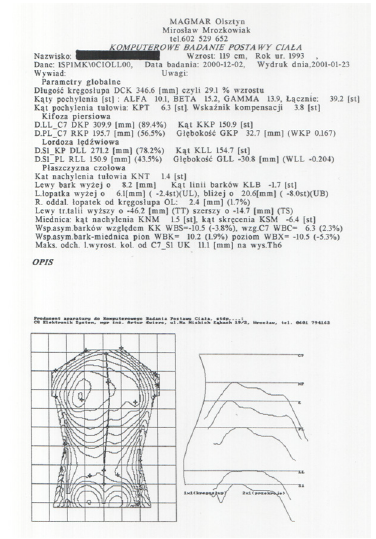


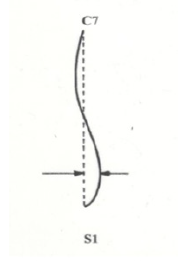
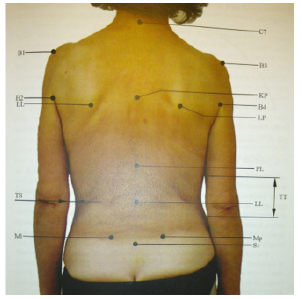


 We use cookies to ensure you get the best experience on our website.
We use cookies to ensure you get the best experience on our website.